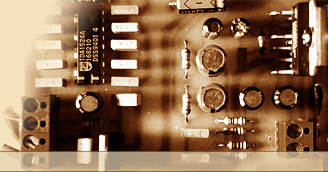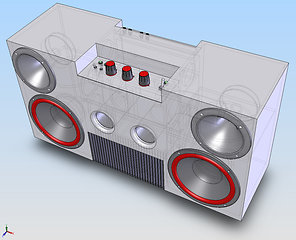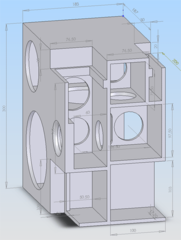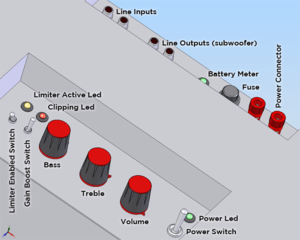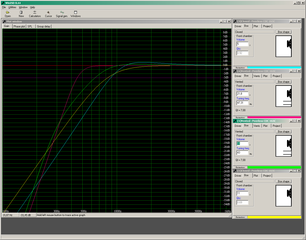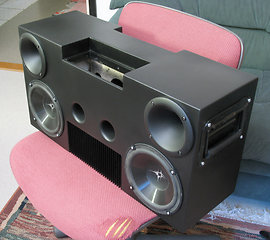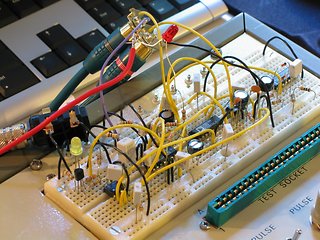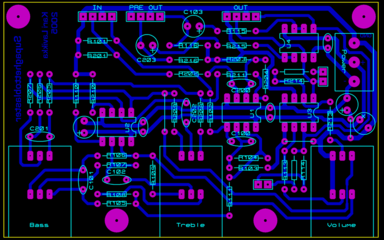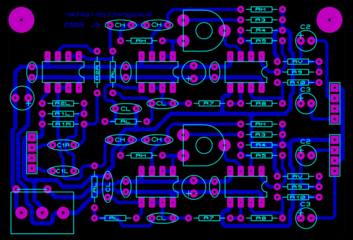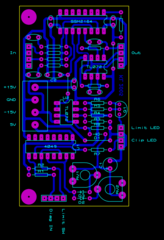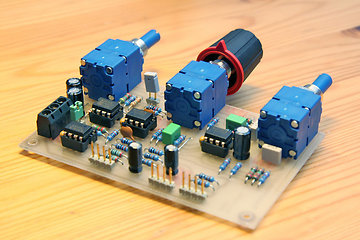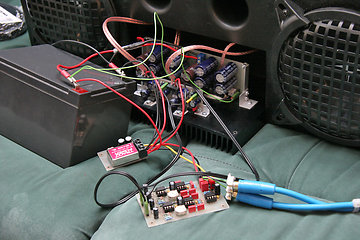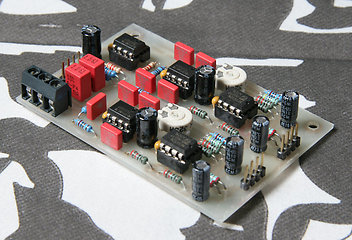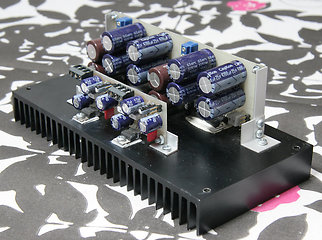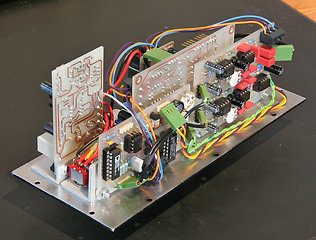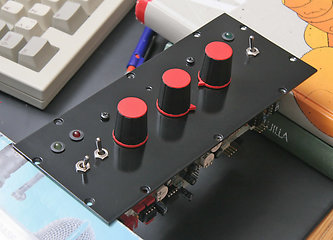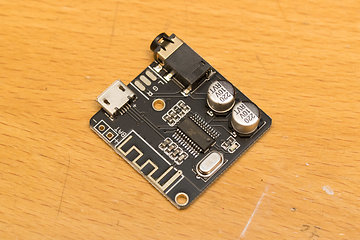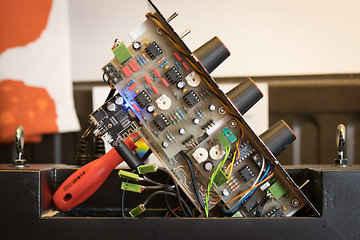Supaghettoblaster
 I like high-quality (and loud) audio and wanted to enjoy it outdoors or wherever there is a party. A powerful portable boombox was needed. In the early 2000s, such devices were not readily available on store shelves. The only choice was to design and build one by myself. Nowadays, portable bluetooth speakers are ubiquitous, but they really cannot compete with Supaghettoblaster! They lack bass response, sound pressure, sturdiness, or they are just not awesome enough.
I like high-quality (and loud) audio and wanted to enjoy it outdoors or wherever there is a party. A powerful portable boombox was needed. In the early 2000s, such devices were not readily available on store shelves. The only choice was to design and build one by myself. Nowadays, portable bluetooth speakers are ubiquitous, but they really cannot compete with Supaghettoblaster! They lack bass response, sound pressure, sturdiness, or they are just not awesome enough.
Planning
I have always been interested in electronics and building things with my hands. The project started sometime around the year 2003. I began by researching what kind of components and circuits were available and how to fulfill the requirements I had in my mind:
- Must be mobile and use a rechargeable battery
- A LOT of power and sound pressure
- Relatively good sound quality
- Plenty of bass
- The party should last long enough and, therefore, the battery should do it as well!
- High efficiency to conserve power
- And of course, it should look absolutely cool
- Internal signal source not required. Just input for MiniDisc, iPod, Smartphone, whatever
Philips Semiconductors (now known as NXP) had some quite interesting integrated power amplifier chips, such as TDA1562Q, which contains a built-in charge pump for doubling the operating voltage. It is also a so-called Class-H -amplifier, internally switching the voltage between 12 and 24 (doubled) volts on the fly. Such a technique promises significant efficiency gains. Immediate benefits are longer-lasting battery and a smaller heat sink. Nowadays everyone uses super-high-efficiency class-D amplifiers, but such technology was virtually non-existent back then.
The impedance of speakers is usually 8 ohms. However, in battery-powered applications it is quite a problem because Power = Voltage^2 / Resistance. Increasing operating voltage in battery-powered device is certainly possible but not very trivial. However, speaker elements designed for cars appeared to be 4 ohms mostly! For instance, Peerless CDC-165C speakers, which, unfortunately, are nowadays a discontinued product, provide a great frequency response and an awesome sensitivity of 91dB/W, ideal for this project.
To maximize sound quality and output power, I chose to proceed with an active-crossover design and bi-amped speakers. PA-tweeters may be a somewhat radical choice, but they have an incredible sensitivity (105dB/W) and good power handling capacity. Thus, it's practically impossible to burn them. Their frequency response in the high end is a bit limited though, and frequencies over 15kHz cannot be reproduced in practise. More expensive tweeters typically have a better frequency response, but I had to think about the budget.
Enclosure
Now I had figured out essential components of a powerful ghettoblaster. The next step was to design and build an enclosure for the system. After many many iterations and modifications I finally had a design:
The volume of the enclosure is about 22 litres. With 11 litres per woofer, it was possible to tune the bass reflex system down to 40 Hz. A bigger enclosure would have been better for deeper bass output but hey, this had to be portable! The heat sink is overly big and prominent, but it looks pretty cool (eh heh) and fits into the overall design quite nicely.
6,5mm plywood is a natural choice for an enclosure that should be quite light but durable enough the same time. Construction didn't take much time if compared to the design phase. I spent about two days sawing, drilling and screwing. Waiting for paint to dry was frustrating.
Electronics
Ok, something essential was still missing.. the electronics! This phase took a long time — building and soldering are fast and easy, but designing printed circuit boards is very time-consuming — almost frustrating. All PCB:s are my design. Some of the circuits are fully designed by me, but the rest are mostly inspired by datasheets and especially Elliot Sound Products' schematics. Unfortunately, I have lost all the original PCB design files. I have them only in printed form... plus a few low resolution png images.
TDA1562Q has a diagnostic pin that gets connected to ground when the chip is overheating or THD goes beyond 10%. That's great, I can have a red led blinking when the signal is too loud! However, there are also more practical uses for that. I designed a limiter circuit that compensates distorting peaks. Surely, the output gets very compressed when someone turns the volume knob to maximum, but that effectively eliminates nasty clipping and distortion. The design phase took quite a while as I tested different ideas for the controller and VCA. Final schematics for the controller part are avaiable here. The controller modulates the signal using an SSM2164 VCA.
The bass power amplifiers contain multiple electrolytic capacitors to compensate voltage fluctuation caused by battery's internal resistance. Voltage doubling charge pump requires quite a bunch of capacitors as well. Lead batteries are capable of outputting an incredible current, and the power switch was in danger to melt when switched on! I had to design a soft start circuit to prevent that. The current implementation is quite lousy however, and I have yet to build a better one.
In early 2005 all the necessary boards were ready:
- Power amplifier for bass speakers (2x TDA1562Q)
- Power amplifier for tweeters (2x TDA2003)
- Crossover Network
- Pre-Amp
- Limiter circuit
- DC-DC converter for op-amps (+-15V)
- Soft-start circuit and battery meter
The final step was to assemble the console and the power amplifier block. All the electronics are attached to those two modules that are easy to unmount for service, tuning or whatever.
Final specs & features
The project lasted over two years, although I had several long pauses with it. Last finishing touches were made in the spring of 2005. And here is a summary of my finished creation:
- Bass reflex enclosure
- 12 V 12 Ah lead acid battery
- About five hours of music at maximum power
- Over 100W of output power
- Bi-Amped design with Linkwiz-Riley crossover
- Pre-Amp with bass, treble and volume controls
- Limiter circuit for distortion prevention (and additional loudness)
- Line level RCA input
- Line level RCA subwoofer output
- Three level battery meter (green = full, red = almost empty, not lit = somewhere between)
- Weight: ~15 kg
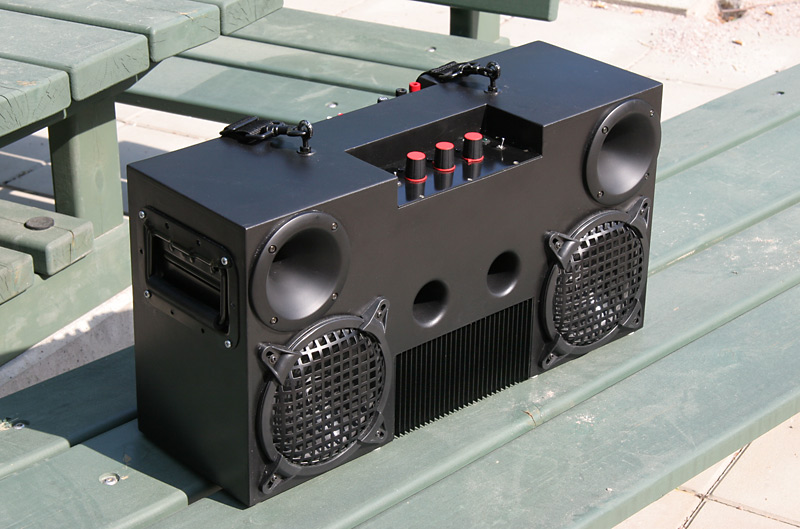
Supaghettoblaster has provided music and joy in numerous events and parties over the years. Although it's technology containing analog amplifiers and a lead-acid battery has become somewhat old-fashioned, it is still a VERY capable boombox.
2021 updates
Except for some Lo-Fi headsets, Bluetooth audio really didn't exist in the early 2000s. iPod was just introduced, but it had an ordinary headphone jack as its only output method. My current phone, however, is so modern that it has no jack for headphones! Now, sixteen years later, I modernized the ghettoblaster by adding a cheap, Chinese Bluetooth receiver board. The switch for enabling the limiter, introduced in the initial design, had no practical use as it was always toggled on anyway. I thus repurposed it for input selection, toggling between RCA inputs and Bluetooth. I had some interference and noise issues with the receiver board but managed to fix them using an LC filter. The range and sound quality are great!
I'm also planning to replace the lead-acid battery with 4s Li-ion. The current battery weights about four kilograms and doesn't like deep discharging. With Li-ion cells, I can could also increase the voltage by a few volts, which means more power!
